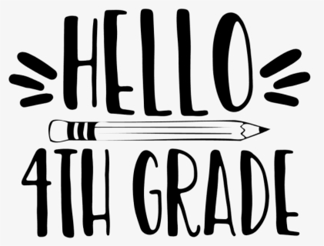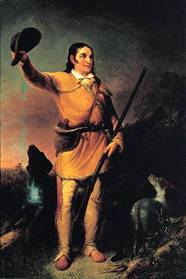
Reading Basics - Purpose for Reading

Course Overview
Welcome to Language Arts Grade 4!
This course consists of reading, grammar, and writing. Although there will not
be spelling tests, students are still required to spell words correctly. This
will require them to use a dictionary or a thesaurus when unsure of the
spelling of words they are using. In addition to basic testing, this course
will incorporate some speaking and listening standards. For example:
discussions and presentations. Topics in other domains of education such as
science are integrated into this course of study. Students engage in skill
units to develop reading fluency and comprehension. They will read a variety of
genres including chapter books, tall tales, fables, poetry, folk tales, and
informational articles. Students use the writing process to engage in a variety
of writing applications. Journal entries, poetry, reports and retelling of
stories are some examples.
Unit Overview
Hello there! You are about to embark on a wonderful
adventure in learning. Reading is a way to open doors everywhere. You will have
opportunities to read many different types of literature. Some you will enjoy
more than others, but you will learn from all of them.
Purpose for Reading
So, here we go!
The first thing to understand is what it means to have a purpose for reading.
The many types of writings are for many reasons.† Some reasons for reading are to:
∑ find information about a topic
∑ understand a subject
∑ interpret the meaning of an idea
∑ enjoy a story
∑ solve a problem
Every selection should be read at least twice because
there will be comprehension questions to answer after each one. Therefore, you
need to read the selection, then review the questions. It will help you to
focus on the information as you read the information a second time. Then
proceed to answer the question for that selection.
Genres
You will read many different types of literature,
which are called genre. Some different types of genres are:
∑ Fables
∑ Poetry
∑ Tall Tales
∑ Drama
∑ Fantasies
∑ Chapter books
∑ Folk Tales
∑ Informational material
∑ Fiction
∑ Non-fiction
All reading material is either fiction or non-fiction. Fiction material is made
up stories. Non-fiction is true information. All genres fall somewhere it those
two main categories.
All of them cannot be done in every lesson. You will often be asked to identify
which genre the selection is from. It is important to understand the difference
between each type. There will be a poem, tall tale, fable, a folk tale, and an
informational article.
Skills in Reading
There are many skills in reading.† One
skill is cause and effect.† When
something is done (the cause) something happens (the effect).† Example:†
When Sally ate too many pieces of pizza, she got a stomachache.† The cause: eating too much; and the
effect: getting sick. Look for questions about cause and effect today.
Another skill is the theme of the story.†
The theme is what the story is trying to teach you. Look for a
question about theme, too.
†
Authorís purpose is the authorís reason for writing the story. You will learn more
about authorís purpose in the fourth lesson. Look for a question about authorís
purpose today.
Letís begin the walk down the reading path!
†
Fable
The first type of literature will be a fable. The fable
is a way of teaching a moral lesson.† The
fable is a short story with a hidden meaning. This is also called the moral
or theme of the story. Please read the fable carefully and then
answer the questions that follow. You should read the fable more than once.
“The Ant and the Dove” An ant went to the bank of a river to
quench its thirst and being carried away by the rush of the stream, was on the
point of drowning. A dove sitting on a
tree overhanging the water plucked a leaf and let it fall into the stream close
to her. The ant climbed onto it and floated in safely to the bank. Shortly afterwards a bird catcher came and
stood under the tree, and laid his trap to catch the dove, which sat in the
branches. The ant, realizing the man was
trying to catch the dove, stung him in the foot. In pain the bird catcher threw down the
twigs, and the noise made the dove take flight.
|
Letís Practice
The second type of literature you will read is a
poem.† There are many different types of
poems, but the most familiar type is one that rhymes.
“Plugging In” by Shel
Silverstein.
Peg plugged in her ‘lectric toothbrush,
Mitch plugged in his steel
guitar,
Rick plugged in his CD
player,
Liz plugged in her VCR.
Mom plugged in the TV
fights.
I plugged in my blower -
dryer --
|
†
Tall Tales
The third type of reading selection is a tall tale.† Tall tales are stories that are
exaggerated!† Since they are exaggerated,
they are also fiction stories.
 |
| This tall tale is about Davy Crockett. A long time ago in the state of
Tennessee, a comet shot out of the sky! The comet hit the top of the mountain
and a baby boy tumbled off and landed on his feet. The baby’s name was Davy Crockett. Davy was able to carry thunder in his fist
and fling lightening from his fingers! As he grew, Davy claimed to be part horse, part alligator, and part
turtle. He told everyone he was so
strong because he ate bear and drank buffalo milk. Davy was a BIG boy! When he was eight years old, he weighed 200
pounds!! One day Davy ran into a panther
in the woods. They began to fight and
Davy almost lost! As luck would have it,
Davy finally got the best of the panther and took him home to teach him some
manners. Davy taught the big cat to cross his paws and sing in church. He even taught the panther to start a fire
with his eyes! Davy and the panther
became the best of friends from then on!
|
The fourth selection for this lesson is a folk
tale.† A folk tale is a story from a
culture of people. Folk tales are stories to try entertain.† This story is from Native American Animal
Stories told by Joseph Bruchac.
“Silver Fox and Coyote
Create Earth”
I want to meet someone,
I want to meet someone,
I want to meet someone,
I want to meet someone.
So, she sang and then she met Coyote.
“I thought I was going to meet someone,” Silver Fox
said. “Where are you traveling?”
“Where are you traveling?” Coyote said. “Why are you traveling like this?”
“I and traveling because I am lonely,” Silver Fox
said.
“I am also wondering around,” said Coyote.
“Then it is better for two people to travel together,”
Silver Fox said.
Then as they traveled, Silver Fox spoke. “This is what I think, let’s make the world.”
“How will we do that?” Coyote asked.
“We will sing the world,” Silver Fox answered.
So, the two of them began to sing and dance. They danced around in a circle and Silver Fox
thought of a clump of sod. Let it come,
Silver Fox thought, and that clump of sod was in Silver Fox’s hand. Silver Fox threw in down into the fog and
they kept on singing and dancing.
“Look down,” said Silver Fox. “Do you see something
below us? “Then let us close our eyes and keep singing and dancing,” said
Silver Fox. That is what they did. As they sang and danced the earth took shape
below them.
“Look down now,” Silver Fox said.
“I see it,” said Coyote. “It is very big now. It is big enough.”
Then the two of them jumped down to Earth. They danced and sang and stretched it out even more. They made everything on Earth, mountains and valleys, rivers and lakes, plants, animals, and people. That is what they did, way back then. |
Non-fiction
The fifth and final reading of the unit is a non-fiction selection. The
information is not made up.† Many
non-fiction selections are written to give information to the reader.† This is a short non-fiction selection.
Seasons of the Year
|
| The year has four seasons. Winter is the first season of the year. It is the coldest season and the usual type
of precipitation in winter is snow. School is cancelled if there is too much snow, or the temperature is
very cold. The second season of the year
is spring. That is when the temperature
begins to warm, and the plants begin to grow. Spring begins in March. The third season of the year is summer.
Summer has the warmest temperatures and the most sunlight hours. Most children do not attend school in the
summer. The final season of the year is autumn. During autumn the leaves change colors and fall to the ground. The final fruits of harvest are taken in and
children return to school.
|
A pronoun is a word that takes the place of a noun. There are many types of
pronouns and the most common are personal pronouns, such as he, she and they.
Relative Pronouns
This lesson will be about relative pronouns. A relative pronoun connects one
part of a sentence with a word in another part of a sentence. It performs the
function (or job) of another part of speech called a conjunction. A conjunction
connects words or groups of words together.
For example: The river is deep and wide. And is the conjunction is the sentence.
This is a list of the most common relative pronouns.
| WHO | WHOSE |
| WHICH †††† | WHAT† |
| WHOEVER††† | WHATEVER††† |
| WHICHEVER†††† | THAT
|
In this sentence WHO is the relative pronoun to the fifth grader.
There will be additional pronoun work all year. Begin
a review guide for yourself beginning with this lesson for all parts of speech.
You can make a chart or graph or just a list of words. It will be helpful to
look back on when other lessons expand on pronouns.
Begin with a title PRONOUNS.
Add a subtitle for this lesson, RELATIVE PRONOUNS. Under that subtitle, list
the 8 words from todayís lesson. Leave room to add other words from future
lessons.
Adverbs
The other grammar for this lesson is adverbs.
Adverbs are words that modify or describe verbs. They often end in the letters ly. Some examples are: quietly†††† usually††††
slowly††† †quickly††††
always.
The girl sang quietly.††
He usually is on time.
The boat moved slowly in the water.
Will John move quickly to catch the dog?
Penny is always on time!
Today we will have a video lesson on adverbs. Take notes!
Begin with a title ADVERBS.
You may want to add a subtitle Ending in LY. Add the 4 LY words from the list
today. Add another subtitle Not Ending in LY and list the other word from
today.